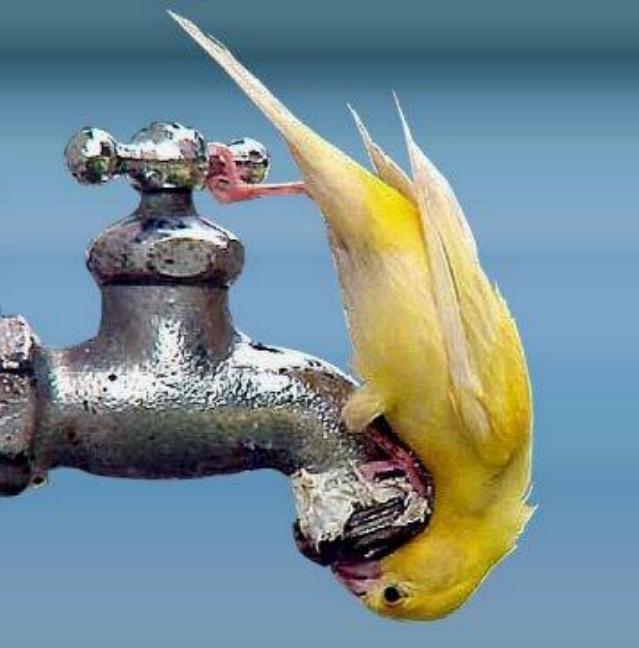Archive for September, 2011
Marinate yourself in scarcity to create new thinking
 There’s agreement: new thinking is needed for innovation. And for those that have tried, there’s agreement that it’s hard. It’s hard to create new thinking, to let go of what is, to see the same old things as new, to see resources where others see nothing. But there are some tricks to force new thinking, to help squeeze it out of ourselves.
There’s agreement: new thinking is needed for innovation. And for those that have tried, there’s agreement that it’s hard. It’s hard to create new thinking, to let go of what is, to see the same old things as new, to see resources where others see nothing. But there are some tricks to force new thinking, to help squeeze it out of ourselves.
The answer, in a word, is scarcity.
In the developing world there is scarcity of everything: food, shelter, electricity, tools, education; in the developed world we must fabricate it. We must dust off the long-neglected thought experiment, and sit ourselves in self-made scarcity.
Try a thought experiment that creates scarcity in time. Get the band together and ask them this question: If you had only two weeks to develop the next generation product, what would you do? When they say the question is ridiculous, agree with them. Tell them that’s the point. When they try to distract and derail, hold them to it. Don’t let them off the hook. Scarcity in time will force them to look at everything as a resource, even the user and the environment itself (sunlight, air, wind, gravity, time), or even trash or byproduct from something in the vicinity. At first pass, these misused resources may seem limited, but with deeper inspection, they may turn out to be better than the ones used today. The band will surprise themselves with what they come up with.
Next, try a thought experiment that creates scarcity of goodness. Get the band back together, and take away the major performance attribute of your product (the very reason customers buy); decree the new product must perform poorly. If fast is better, the new one must be slow; if stiff is better, the new one must be floppy; if big, think small. This forces the band to see strength as weakness, forces them to identify and release implicit constraints that have never been named. Once the bizarro-world product takes shape, the group will have a wonderful set of new ideas. (The new product won’t perform poorly, it will have novel functionality based on the twisted reality of the thought experiment.)
Innovation requires new thinking, and new thinking is easier when there’s scarcity – no constraints, no benchmarks, no core to preserve and protect. But without real scarcity, it’s difficult to think that way. Use the time-tested thought experiment to marinate yourself in scarcity, and see what comes of it.
Imagine your next innovation
- The economy has picked up, but your sales have dropped off.
- Competitors’ products work better than yours.
- Competitors’ product launches are more frequent than yours.
- The number of competitors is increasing.
- The sales team is angry – they cannot sell against competitors.
- The product roadmap is more of the same.
The situation is clear – you’re behind your competitors, and they are accelerating. The action plan is clear – leapfrog your competitors.
Declare failure with the more-of-the-same product roadmap, and imagine a new one. The new one must leapfrog your competitors (though they’re accelerating). Imagine a new product roadmap that’s so radical it’s borderline ridiculous, that’s so outrageous you’re afraid to present it. (A sign it’s right on-the-mark.) Imagine one you have little to no idea how to do. Now, take the best of the ridiculous product roadmap and replace the oldest parts of the old one. Create a nice hybrid, and make it happen.
Situation A is tough because there is stress around the company’s future, and it’s easy because there’s a clear reason to innovate – company survival.
a
Situation B
- The economy has dropped off, but your sales have picked up.
- Your products work better than your competitors’.
- Your product launches are more frequent than your competitors’.
- There the number of competitors is decreasing.
- The sales team is happy – they can sell against competitors.
- The product roadmap is more of the same.
The situation is clear – you’re ahead of your competitors, and they are accelerating. The action plan is clear – leapfrog yourself.
Declare failure with the more-of-the-same product roadmap, and imagine a new one. The new one must leapfrog yourself (though you’re accelerating). Imagine a new product roadmap that’s so radical it’s borderline ridiculous, that’s so outrageous you’re afraid to present it. (A sign it’s right on-the-mark.) Imagine one you have little to no idea how to do. Now, take the best of the ridiculous product roadmap and replace the oldest parts of the old one. Create a nice hybrid, and make it happen.
Situation B is easy because there is no stress around the company’s future, and it’s difficult because there is no clear reason to innovate.
There’s no reason to argue which situation you’re in, no need to argue which is more difficult. Either way, leapfrog something.
Change your work.
 You are you, and work is work, but work must fit you, not the other way around. Yet we hose it up most of the time. Most of the time it’s: “improve your weaknesses” or “close your gaps”. Make no mistake, this is code for “change yourself so you fit our work.”
You are you, and work is work, but work must fit you, not the other way around. Yet we hose it up most of the time. Most of the time it’s: “improve your weaknesses” or “close your gaps”. Make no mistake, this is code for “change yourself so you fit our work.”
I say we flip it on its head; I say change your work to fit you; I say do your work differently; do it in a way that takes advantage of your strengths; do it the way you think it should be done. It’s your work; you’re the expert; you know it best. You choose. Change your work.
With an uncertain economy and high unemployment, this change-the-work stuff sounds scary, but it’s scarier not to do it. Your company’s global competitiveness is weakened when you’re asked to change to fit the work; but when work changes to fit you, your company is more competitive. Think about it – you’re more engaged, you’re happier, you’re more productive, and you do better work.
What could be better for your company?
What could be better for you?
WHY, WHAT, HOW to Improve Engineering
 When asked how to improve manufacturing, the recipe is clear: lean. When asked how to improve engineering, the recipe: there isn’t one. Each engineering improvement effort is unique; though there are common themes and building blocks, each has its own fingerprint.
When asked how to improve manufacturing, the recipe is clear: lean. When asked how to improve engineering, the recipe: there isn’t one. Each engineering improvement effort is unique; though there are common themes and building blocks, each has its own fingerprint.
Each company has its own strengths, weaknesses, opportunities and threats; each company has unique products and markets; each its own goals; each its own culture; each its own future state. Informed by uniqueness, the recipe is unique. To create your unique improvement recipe, I suggest WHY, WHAT, HOW.
WHY
Before your engineering improvement recipe can be formed, the fundamental shaping question must be answered. Take a breath, fire up your laptop, put on your headphones, and queue up your best music. Type this question:
WHY does our business demand we improve engineering?
Now, type the answer. (Literally.) Use nouns and verbs to explain why engineering must improve. If you can’t, stop. Without a clear, concise, jargon-free answer nothing can be done to advance the cause. (Though there can be plenty of activity, there can be no progress.) Without the WHY, you cannot pass GO. You must create a clear, concise WHY.
Seek out help from trustworthy people to create the WHY. Don’t move forward until you understand it well enough to explain it to the engineering organization. Now, with WHY in place, it’s time for WHAT.
WHAT
Informed by WHY, it’s time for WHAT. Secure a quiet spot, scare up a big piece of paper, and grab your favorite pen. On the top of the page, write this question:
WHAT does engineering improvement look like?
Now, draw the picture. (Literally.) Use sketches, scribbles, arrows, blocks, and people’s names to describe what improved engineering looks like. Sit in the future and describe it in present tense. Once drawn, review it with folks you trust, revise it, and repeat. If you cannot draw the future, keep trying. Once you have something, review it with folks you trust, revise it, and repeat. Don’t move forward until you draw it clearly enough to explain it to the engineering organization. And with WHAT in place, it’s time for HOW.
HOW
The first step of HOW is similar to WHAT. Pick up your favorite pen, come back to the now, and draw a picture of today’s engineering capabilities, engineering’s current state. Again, use scribbles, blocks, arrows, and names.
The second step is to define the difference between future and current states. With future and current state pictures side-by-side, perform a mathematical subtraction: future state – current state. The difference is HOW. A block in future state that’s not part of the current state is a new thing that must be created; a new arrow in the future state is an activity, interaction, or relationship that must be created; a new person, named or unnamed, represents new thinking. Things that appear in both states are strengths to build on.
The third step, prioritization. Start here:
What engineering strengths will we build on?
It’s important start with strengths. It sends the right message to the engineering organization: we must build on build on what works, build on what got us here. Engineers need to know that, fundamentally, their work is good, and major building blocks are in place, the foundation is solid.
What development areas will we improve?
Take care with this one. To avoid a demoralized engineering team, there should be fewer development areas than strengths. Though there may be many development areas, call out only the most important.
What’s the right first bite?
The most important improvements are those that strongly support the WHY; there’s a natural sequence of things (socks before shoes) that must be respected; and there’s a finite amount of work that can be done. Use these three lenses as the start of a prioritization framework.
Building blocks for engineering improvement are the same for all companies: people, tools, and processes, but there are many types of people, countless engineering tools, and all processes can be improved. WHY, WHAT, HOW can help define your unique improvement fingerprint: the right people, the right tools, the right processes, shaped by your unique company goals, and improved in right sequence.

 Mike Shipulski
Mike Shipulski